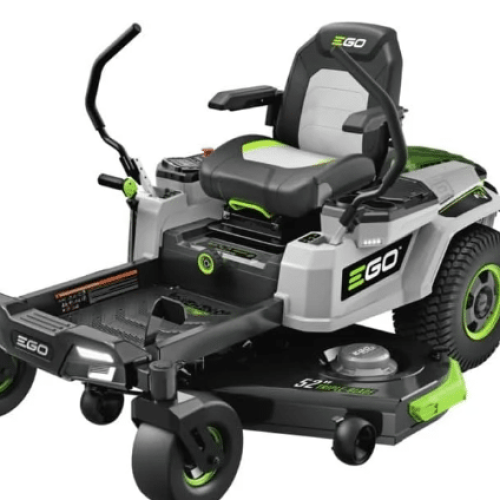As the gardening season ends, it’s key to keep your tools in good shape for the next year. Proper care during winter helps your tools last longer and be ready for spring. This guide will show you how to clean, check, sharpen, prevent rust, and store your tools. It also includes eco-friendly tips to keep your tools in top shape all year.
Key Takeaways
- Proper wintertime maintenance extends the lifespan of garden tools
- Cleaning, inspecting, and sharpening tools ensures optimal performance
- Rust prevention and lubrication protect tools from damage
- Proper storage conditions maintain tool quality during the offseason
- Eco-friendly tool care practices reduce environmental impact
Importance of Wintertime Tool Maintenance
Keeping your garden tools in good shape during winter is key. If you don’t take care of them, they might rust or get damaged. This can be a big problem when you need them most, in the spring.
Why Maintaining Tools Matters
Winter weather can really hurt your garden tools. They might get dull, corroded, or damaged. If you don’t take care of them, they won’t last long.
By keeping your tools in good shape during the off-season, you make sure they’re ready for spring. This way, you can garden more efficiently and safely.
Benefits of Winter Care
- Extends the lifespan of your tools, saving you money on replacements
- Ensures optimal performance, making your gardening work more efficient
- Reduces the risk of injury from using damaged or malfunctioning tools
- Protects against rust, corrosion, and other types of weather-related damage
- Allows for a smooth transition from winter to spring gardening
Spending a bit of time on Garden Tool Storage and Offseason Tool Care in winter pays off. Your tools will be ready for spring, making gardening easier and safer.
Cleaning Your Garden Tools
As winter gets closer, it’s key to keep your gardening tools in great shape. Proper Cleaning Garden Tools makes them last longer and get ready for the next gardening season. Here are simple steps to keep your tools looking new during the Wintertime Garden Tool Maintenance.
Gathering Cleaning Supplies
First, collect what you need to clean your garden tools. You’ll require:
- Wire brushes
- Soap or a mild detergent
- Water
- Clean rags or paper towels
Best Cleaning Techniques
Choose the right cleaning method based on your tool’s material:
- For metal tools, like pruners, shovels, and hoes, use a wire brush to get rid of dirt or rust.
- For tools with wooden handles, clean them with a damp cloth and a mild soap or detergent mix.
- For plastic or composite tools, use a soft-bristled brush or a clean rag to remove dirt gently.
Rinsing and Drying Methods
After cleaning, rinse your tools well with clean water to remove soap or debris. Dry them completely with clean rags or paper towels. This is important to stop rust from forming in winter.
For wooden handles, apply a thin layer of linseed or tung oil. This helps keep the wood preserved and protected from the weather.
| Tool Material | Cleaning Technique | Drying Method |
|---|---|---|
| Metal | Wire brush | Rag or paper towel |
| Wood | Damp cloth with mild soap | Rag or paper towel, optional oil application |
| Plastic/Composite | Soft-bristled brush | Rag or paper towel |
By following these Cleaning Garden Tools and Wintertime Garden Tool Maintenance steps, your gardening tools will be ready for the next season.
Inspecting Your Tools for Damage
As the gardening season ends, it’s important to check your lawn tools for damage. Proper Lawn Tool Preparation helps your equipment last longer and work better in the spring. By carefully looking at each tool, you can find and fix problems early. This helps Extend Tool Life.
Common Issues to Look For
When checking your garden tools, watch for these common problems:
- Cracks, splits, or splinters in wooden handles
- Bent or damaged metal components, such as blades or tines
- Loose or wobbly parts that could indicate wear or damage
- Rust or corrosion on any metal surfaces
- Worn or dull cutting edges
How to Assess Tool Condition
Examine each tool closely, focusing on the materials and parts. Gently bend and move the tool to check for weakness. If you find problems, decide if it can be fixed or if it needs to be replaced. Spending time now to care for your tools can save you money and hassle later.
| Tool Condition | Recommended Action |
|---|---|
| Minor Wear and Tear | Clean, sharpen, and lubricate the tool |
| Significant Damage | Repair or replace the tool as needed |
| Irreparable Condition | Replace the tool with a new one |
By thoroughly checking your lawn tools in winter, you’ll be ready for spring gardening. Proper Lawn Tool Preparation and Extending Tool Life means your tools will be ready for the growing season.
Sharpening Blades for Optimal Performance
Keeping your garden tools sharp is key during Sharpening Garden Tools and Wintertime Garden Tool Maintenance. Sharp blades work better and last longer. Here’s what you need to know to keep your tools sharp.
Tools Needed for Sharpening
To sharpen your garden tools well, you’ll need a few important items:
- Files – Both flat and round files are useful for sharpening various blade types.
- Whetstones – These specialized sharpening stones help you achieve a precise, even edge.
- Bench grinder – For a more aggressive sharpening approach, a bench grinder can quickly restore dull blades.
Step-by-Step Sharpening Guide
Here’s how to sharpen your garden tools for the best performance:
- Thoroughly clean the tool’s blade, removing any dirt, rust, or debris.
- Determine the appropriate sharpening angle for the tool. This typically ranges from 20-30 degrees for most garden tools.
- Using a file or whetstone, carefully sharpen the blade, maintaining the correct angle and applying even pressure.
- For a finer edge, use a higher grit whetstone or buffing wheel on a bench grinder.
- Wipe the blade clean and apply a light coating of oil to protect it from rust.
By following these steps, you can keep your Sharpening Garden Tools and Wintertime Garden Tool Maintenance in top shape. This ensures they work well and last for many years.
Rust Prevention and Removal
As winter arrives, protecting your garden tools from rust is key. Rust can damage your tools, making them less useful. But, with a few easy steps, you can keep them in great shape for spring.
Identifying Rust on Tools
Start by checking your tools for rust signs. Look for color changes, pits, or flaky metal. Finding rust early helps prevent more damage and keeps your tools working well.
Effective Rust Removal Methods
If you find rust, don’t worry. You can remove it with steel wool, wire brushes, or rust removers. Always wear gloves and follow the product’s instructions. After removing the rust, protect your tools from future damage.
Applying Protective Coatings
To stop rust from coming back, apply a protective coating. Use mineral oil or rust-inhibiting spray. These products block moisture and oxygen, preventing rust. Regular use keeps your tools in top condition for years.
By using these Rust Prevention and removal methods, your Wintertime Garden Tool Maintenance is complete. Your tools will be ready for the growing season, letting you enjoy gardening without rust worries.
Oil and Lubricate Moving Parts
Proper lubrication is key to making your garden tools last longer and work better. Choosing the right lubricant is crucial for Lubricating Garden Tools and Extending Tool Life.
Best Oils for Garden Tools
Not all oils are the same. Each garden tool needs a specific oil to keep it running smoothly. Here are some good options:
- Machine Oil – Great for metal parts like pruner blades and lawnmower wheels.
- Linseed Oil – Best for wooden handles to condition and protect them.
- Multi-Purpose Lubricant – Good for many parts, including wheelbarrow axles.
How to Properly Lubricate Tools
It’s easy to lubricate your garden tools, and it makes a big difference. Here’s how to do it right:
- Clean the tool well to get rid of dirt.
- Put a small amount of the right lubricant on the moving parts.
- Wipe off any extra oil with a clean rag or paper towel.
- Run the tool a few times to spread the lubricant.
- Do this every few months or when needed to keep the tool in top shape.
By taking the time to Lubricating Garden Tools properly, you can make them last longer. They’ll keep working well for many seasons.
Storage Solutions for Winter
As the gardening season ends, it’s key to store your Garden Tool Storage properly. This keeps your tools in good shape for the next season. During Wintertime Garden Tool Maintenance, protect your tools from harsh weather. This way, they’ll be ready for spring.
Ideal Storage Conditions
Keep your garden tools in a dry, well-ventilated area. Avoid damp places to prevent rust and damage. A clean, dry space like a tool shed or garage is best. For sensitive tools, use climate-controlled storage.
Organizing Your Tool Shed or Garage
Organizing your tools is important for easy access. Use wall-mounted racks, pegboards, or tool cabinets. This saves space and makes tools easy to find. Labeling storage helps keep everything organized.
| Storage Solution | Advantages | Disadvantages |
|---|---|---|
| Wall-Mounted Racks |
|
|
| Pegboards |
|
|
| Tool Cabinets |
|
|
Follow these Garden Tool Storage tips for an organized workspace. This ensures your tools are ready for the next gardening season. With proper Wintertime Garden Tool Maintenance, your tools will last for many years.
Repairing Damaged Tools
As gardeners, we must keep our tools in good shape. This helps them last longer and work better when we need them most. Some repairs we can do ourselves, but others need a pro. Knowing when to fix it yourself and when to call a pro is important.
When to DIY
Many garden tool problems can be fixed easily at home. These include:
- Replacing worn or broken handles
- Tightening loose screws or bolts
- Sharpening blades
- Removing rust and applying protective coatings
Doing these repairs yourself can save you money and make your tools last longer. Just make sure to follow the maker’s instructions and use the right tools and methods.
When to Seek Professional Help
For tougher problems or power tools, it’s best to get a pro. Here are some times when you should call a repair service:
- Repairing or replacing broken or worn-out parts, like gears, motors, or electronics
- Fixing power tools with broken or not working parts
- Handling big damage or safety issues
Repair services have the skills, tools, and gear to fix these hard problems. They make sure your tools work well and safely again.
| DIY Repairs | Professional Repairs |
|---|---|
| Replacing handles | Repairing/replacing broken components |
| Tightening loose parts | Addressing power tool issues |
| Sharpening blades | Dealing with major structural damage |
| Removing rust and applying coatings | Ensuring safety standards |
By knowing your limits and getting help when needed, you can keep your tools in great condition. This way, you’ll have a successful and productive gardening season.
Preparing for Spring Gardening
Winter is ending, and spring gardening is just around the corner. It’s important to get your Lawn Tool Preparation and Winter Gardening Tips ready. This ensures a smooth start to the gardening season.
Transitioning from Winter to Spring Care
The seasons changing is a great time to check your gardening tools. You should inspect, clean, and maintain them. This makes sure they’re ready for spring’s gardening tasks.
Checklist for Spring Readiness
- Look over all tools for damage or wear from winter.
- Clean and sharpen blades on pruners, shovels, and other cutting tools.
- Lubricate moving parts to keep them running smoothly.
- Organize your tool shed or garage for easy access.
- Get any missing or worn-out tools to have a full set for spring.
- Learn how to properly maintain each tool to make them last longer.
By carefully preparing your gardening tools, you’ll have a great spring gardening season. A bit of effort now means more time for enjoying your garden later.
Eco-Friendly Tool Maintenance Practices
We have a duty to use eco-friendly practices when we maintain our tools. By choosing sustainable cleaning options and reducing waste, we can make our tools last longer. This helps us care for the environment too.
Sustainable Cleaning Options
Forget harsh chemicals and try natural cleaners instead. Vinegar and baking soda are great for cleaning tools without harming the planet. They’re also cheaper and make your tools shine.
Reducing Waste in Tool Care
Instead of buying new tools, fix the old ones. This saves money and cuts down on waste. Use biodegradable lubricants and rust preventatives to keep your tools in good shape. These practices help make gardening more sustainable.
FAQ
Why is wintertime garden tool maintenance important?
Keeping your garden tools in good shape during winter is key. It helps them last longer and work better when spring comes. This way, you avoid having to replace them often and stay safe while gardening.
What are the benefits of wintertime tool care?
Wintertime tool care saves you money and makes your tools work better. It also keeps you safe by avoiding injuries from broken tools. Plus, it stops rust and damage from cold and wet weather.
How do I clean my garden tools for winter storage?
First, get your cleaning supplies ready. Use wire brushes, soap, water, and rags to clean your tools. Make sure to dry them well to stop rust. For wooden handles, apply oil to protect them.
What should I look for when inspecting my tools?
Look closely at each tool for wear, damage, or loose parts. Check wooden handles for cracks and metal for bends. This helps you know if you need to fix or replace them before spring.
How do I sharpen my garden tools for optimal performance?
Get sharpening tools like files and whetstones ready. Follow a guide to sharpen pruners, shears, and shovels safely. Keep the right angles to get sharp edges.
How can I prevent rust on my garden tools?
Spot rust early on metal tools. Clean with steel wool or rust removers. Use oil or sprays to keep them from rusting again. Regular checks and treatments help tools last longer.
What lubricants should I use on my garden tools?
Choose the right lubricants for each tool. Use oil for metal and linseed oil for wood. Apply it to moving parts to reduce friction and rust. This keeps your tools running smoothly.
How should I store my garden tools during the winter?
Keep tools dry and in a well-ventilated area. Use racks or cabinets to organize them. Climate-controlled storage is best for sensitive tools. This protects them from damage and extends their life.
What repairs can I do at home on my garden tools?
Try simple repairs like handle replacements or tightening loose parts at home. For complex issues, get professional help. Learning basic repairs saves money and keeps tools useful longer.
How do I prepare my garden tools for the upcoming spring season?
Make a checklist to get your tools ready for spring. Do final inspections, clean them up, and organize them. This ensures a smooth start to the gardening season.
How can I maintain my garden tools in an eco-friendly way?
Use eco-friendly cleaners like vinegar or baking soda. Repair tools instead of replacing them to reduce waste. Choose biodegradable lubricants and rust preventatives. Eco-friendly tool care supports sustainable gardening.
Source Links
- The Best 15 Snow White Color Palette Combinations – https://piktochart.com/tips/snow-white-color-palette
- How to Store Seasonal Items to Save Space and Stay Organized Year-Round – https://www.intelligentliving.co/store-seasonal-items-save-space/
- California Approves Controversial Seawall Project at San Francisco’s Ocean Beach – https://www.yahoo.com/news/california-approves-controversial-seawall-project-214141709.html
- Safely Get Rid Of Ice On Your Patio Pavers With These Tips And Tricks – House Digest – https://www.housedigest.com/1711155/safely-get-rid-ice-patio-pavers-tips/
- Winter Blues? How to Turn Your Yard Into a Sensory Garden for the Season – https://www.thespruce.com/how-to-make-a-winter-sensory-garden-8745582
- Discover the Nutritious Pahadi Chainsoo Dal: A Winter Favorite from Uttarakhand | – Times of India – https://timesofindia.indiatimes.com/life-style/food-news/discover-the-nutritious-pahadi-chainsoo-dal-a-winter-favorite-from-uttarakhand/articleshow/115362690.cms
- EPA grants $21.9M for MI port upgrades, emission planning – https://www.publicnewsservice.org/2024-11-19/environment/epa-grants-21-9m-for-mi-port-upgrades-emission-planning/a93635-1
- Need To Boost Your Spirits? Here Are 7 Ways To Volunteer On Thanksgiving. – https://www.huffpost.com/entry/volunteer-on-thanksgiving_l_6734ecbbe4b0b5b61d3f64a1
- Calls for mass participation in Greece’s general strike on Wednesday | TornosNews.gr – https://www.tornosnews.gr/en/transport/50545-calls-for-mass-participation-in-greece-s-general-strike-on-wednesday.html
- Greek Development Minister meets with Italian counterpart in Rome | TornosNews.gr – https://www.tornosnews.gr/en/greek-news/economy/50547-greek-development-minister-meets-with-italian-counterpart-in-rome.html
- Fall garden cleanup check list – https://www.thegazette.com/home-garden/the-iowa-gardener-fall-garden-cleanup-checklist/
- Lawn Mower Maintenance – Today’s Homeowner – https://todayshomeowner.com/lawn-garden/guides/lawn-mower-maintenance/
- Tune-up flower beds now for stronger spring color – https://dothaneagle.com/news/community/enterprise-ledger/flower-bed-tips-alabama-extension/article_44e1c5f2-a4db-11ef-9682-b334fc8c5f24.html
- How to winterize raised garden beds – 4 essential tasks to get them prepared and boosted for spring – https://www.homesandgardens.com/gardens/how-to-winterize-raised-garden-beds
- What is Fairy Ring and How to Get Rid of It – https://lawnlove.com/blog/what-is-fairy-ring-how-to-get-rid-of-it/
- The Martha Stewart Blog – https://www.themarthablog.com/
- VEVOR VEVOR Curb Ramp Rubber Driveway Ramp 2 Pack 2.6″ Rise 15T Load Threshold Ramp | VEVOR EU – https://eur.vevor.com/curb-ramp-c_10411/vevor-curb-ramp-rubber-driveway-ramp-2-pack-2-6-rise-15t-load-threshold-ramp-p_010789590376
- 10 CLOSEST Cheap Hotels Near Kirkwood Gardens, Grafton County from 5205 PHP | Trip.com – https://ph.trip.com/hotels/grafton-county-kirkwood-gardens/hotels-c683563m31264745/
- Kewaskum High School hires new football coach | By Jeridiah Halopka – https://www.washingtoncountyinsider.com/kewaskum-hires-new-football/
- Storm brings winter vibes to mountain resorts — what’s in store for ski season? – https://www.sgvtribune.com/2024/11/18/storm-brings-winter-vibes-to-mountain-resorts-whats-in-store-for-ski-season/
- Rock vs. Mulch In Planting Beds – Things to Consider – https://levelgreenlandscaping.com/blog/rock-vs-mulch-in-planting-beds-things-to-consider
- Saugerties Gearing Up For Big Holiday Market Event – https://wpdh.com/christmas-market-saugerties-ny/
- Interest rate cuts fuel optimism for Canada’s ski country in 2025 – https://realestatemagazine.ca/interest-rate-cuts-fuel-optimism-for-canadas-ski-country-in-2025/






